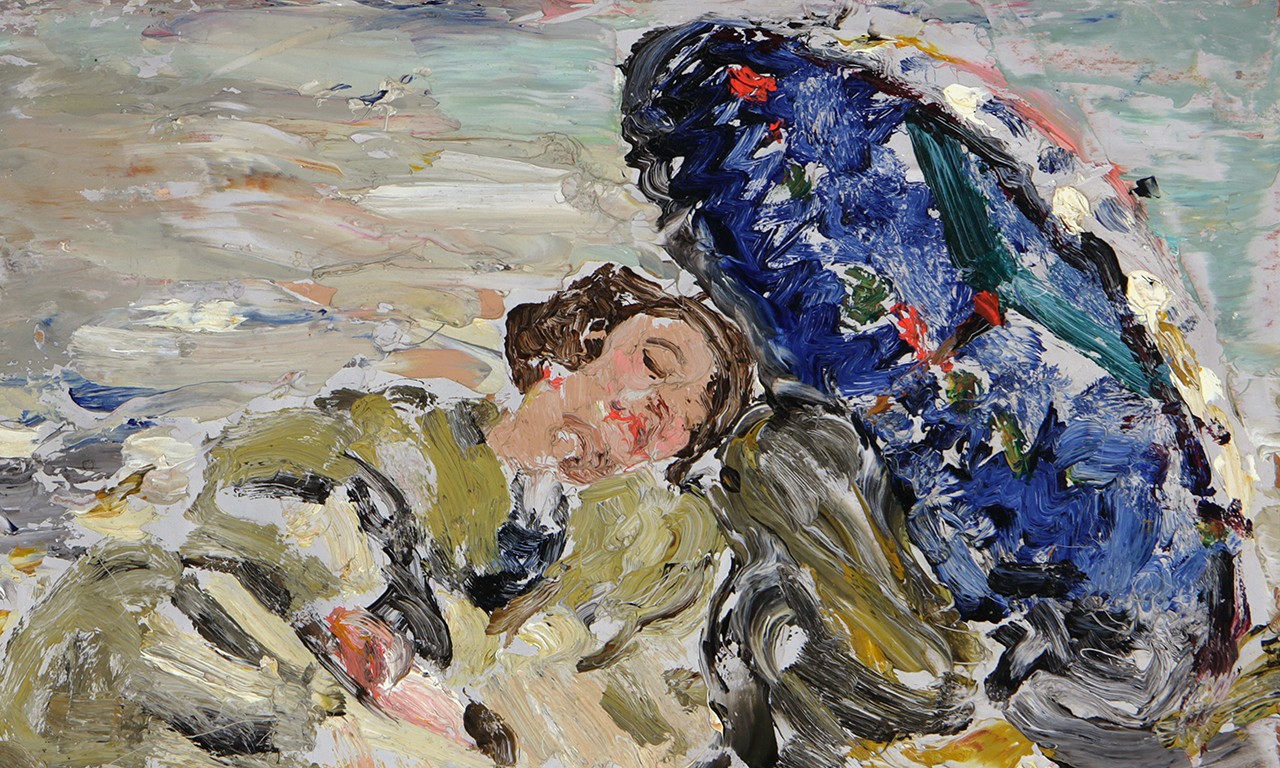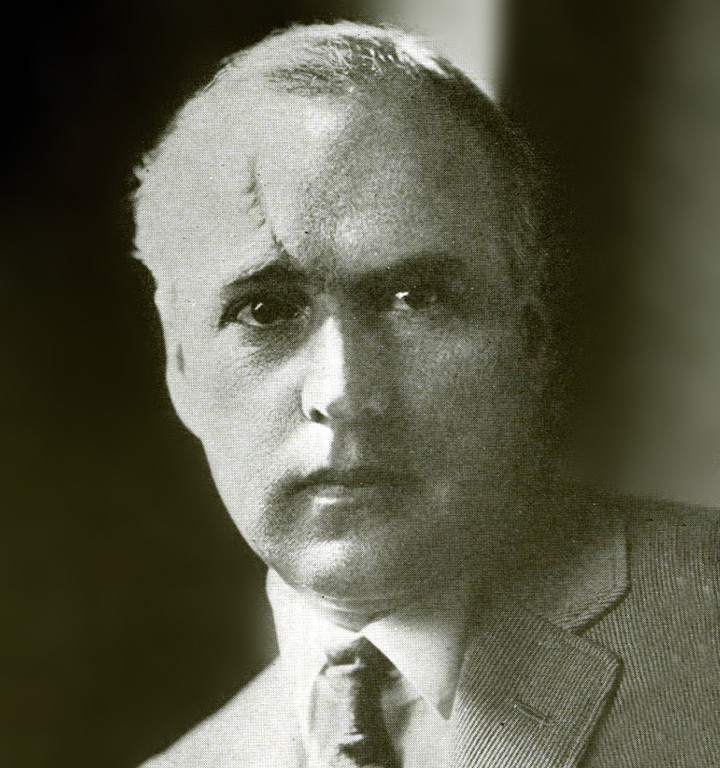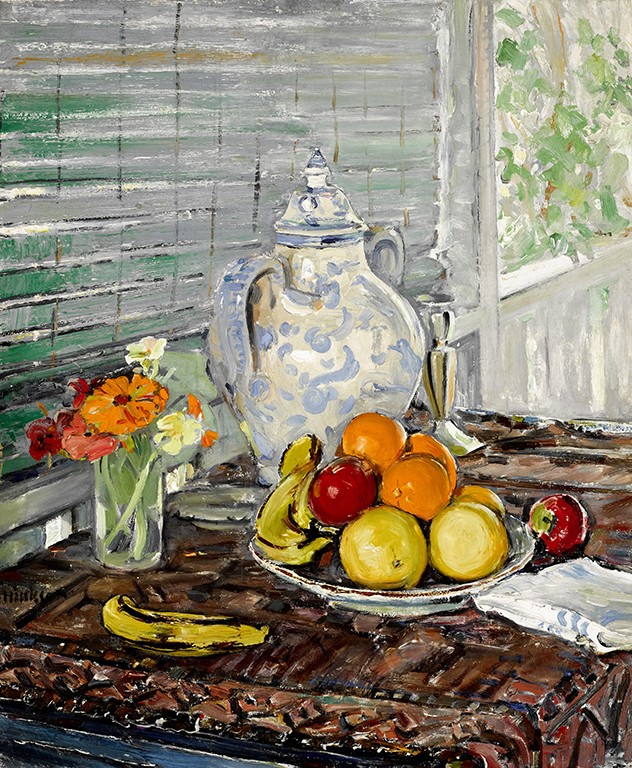 |
Untitled, 1917
Clarence Hinkle (American, 1880-1960); California
Oil on board; 15 1/4 x 12 1/4 in.
30361
Isaac J. Frazee Collection |
California Painters Forever
As the California Art Club’s 111th Annual Gold Medal Exhibition draws to a close at the Bowers Museum, the Bowers Blog takes the opportunity to feature California artists in the permanent collection. Clarence Keiser Hinkle is part of an early chapter in a tradition of California painting that, as evidenced by the Gold Medal Exhibition, is still alive and well in the golden state today. He began like many artists of his day painting in a French style of Impressionism—seen especially in subject of today’s post, an untitled work in the Bowers Museum’s collections—and over the course of his career created a style of his own that was far more aligned with a burgeoning California regionalist style.
 |
| Clarence Hinkle, mid 20th Century |
World Tour
Hinkle was born in Auburn, California, a gold rush town and relatively small county seat located about 35 miles northeast of Sacramento, in 1880. As a young man, Clarence Hinkle was kicked in the face by a horse, earning him a distinctive facial scar that would stay with him for the rest of his life. His interest in art—likely not spurred one way or the other by the aforementioned kick—led him to study at the Crocker Art Gallery in Sacramento, and later on the Mark Hopkins Institute in San Francisco, where he trained with Arthur Mathews. Over the years he went on to attend many of the finest academies around the world: the Art Students League in New York; the Beaux Arts, Colarossi and Julian Academy in Paris; and the Louvre, which Hinkle was resolute about being as much an education as the rest combined. He was taken by Georgian era portraiture. Around 1900 he produced a well-known self-portrait in the collections of the Santa Barbara museum of art that is characteristically picturesque. However, in early 20th Century Paris Impressionism reigned supreme. Either due to preference or pressures of the time, Hinkle dedicated himself to the movement.
 |
Still Life, early to mid 20th century
Clarence Hinkle (American, 1880-1960); California
Oil on canvas; 36 x 30 in.
Private Collection |
The Artful Eight
In 1913 Hinkle returned to California and almost immediately began to exhibit his works. His paintings were well received, and he very quickly became an important member of the art scene in San Francisco. Finding work decorating buildings throughout the state and doing other odd jobs, Hinkle eventually moved down to Los Angeles for teaching positions at the Los Angeles School of Art and Design and the Chouinard School of Art. He taught a great many California artists of the subsequent generation, including Millard Sheets and Phil Dike. Between 1921 and 1928 Hinkle was—along with Mabel Alvarez, Henri de Kruif, John Hubbard Rich, Donna Schuster, Edwin Roscoe Shrader, Edouard Vysekal, and Luvena Vysekal—a member of Los Angeles’ Group of Eight, all progressive painters who had taken up the mantle of modernism and who exhibited together. Hinkle painted and taught in Los Angeles, Laguna Beach, and Santa Barbara until 1935, after which he retired to Santa Barbara.
|
|
Blue Parasol, 1917
Clarence Hinkle (American, 1880-1960); California
Oil on board; 18 x 22 in.
Private Collection |
Untitled, 1917
Clarence Hinkle (American, 1880-1960); California
Oil on board; 15 1/4 x 12 1/4 in.
30361
Isaac J. Frazee Collection |
Melting into an Impression
The untitled Bowers painting was created in California in 1917, at the height of Hinkle’s interest in Impressionism. He uses loose, broad brushstrokes to capture an ephemeral moment of a woman sleeping beneath an umbrella or parasol on the beach. Like Monet’s Impression, Sunrise, the figure is both at rest and in turbulent motion, as if the shore has taken this subject’s somnambulism as an invitation to swallow them. Hinkle was a pioneer in leaving portions of an underpainted layer or the unpainted canvas revealed. This is a technique that he instilled in many of his students. In this work, a grayish ground peeking through swaths of color mutes the otherwise colorful scene like a coastal fogbank stubbornly battling the midday sun. Another painting by the artist owned by a private collector appears to be incredibly similar to this one, showing a figure in in a white dress and red cardigan underneath a similarly blue umbrella. It too relies on using blank space, indicating that the two may be part of a larger series by the artist, or that the Bowers painting may have been painted en plein air and later used as a reference for the other. Given the similar size and medium for the two, the former is more likely.
Text and images may be under copyright. Please contact Collection Department for permission to use. References are available on request. Information subject to change upon further research.




Comments